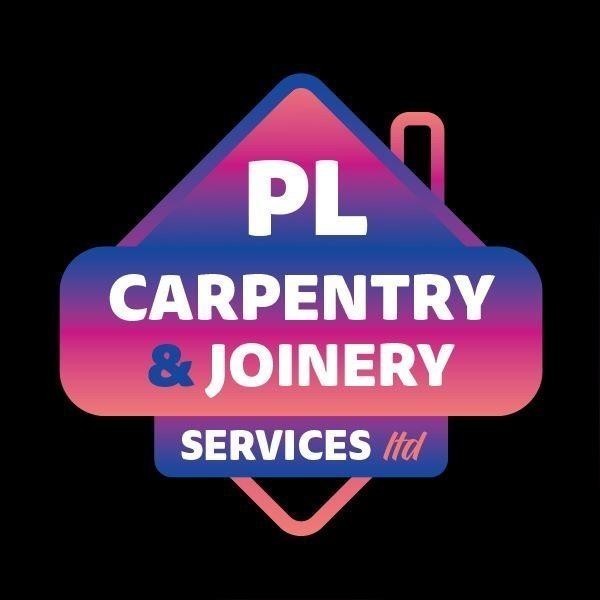Property Refurbishment in Wetherby
Welcome to Evolve Interiors Limited, your go-to experts for all things construction and refurbishment in Cleckheaton and across West York... read more »
Majenta Building Services LTD, nestled in the heart of Fulford, is your go-to solution for all building... read more »
Welcome to Cameo Construction Yorkshire Ltd, your premier choice for all construction needs in Ripponden and the wider West Yor... read more »
Manson Electrical Solutions Ltd is a premier choice for those seeking expert electricians and builders in Ludden... read more »
Welcome to Honeycombe Design & Build Ltd, your premier choice for all building and renovation needs in High Green and... read more »
Awan Property Services is a reputable business based in the vibrant area of Burmantofts, offering a wide range of expert... read more »
Welcome to Ben & Builders, your trusted partner for all things related to home improvement in Great Horton and across West Yorkshire. Bas... read more »
Welcome to Kage Property Solutions Ltd, your trusted partner for all your renovation and property needs in Flanshaw and across... read more »
Welcome to Regent House Property Maintenance Limited, your premier choice for expert tradespeople services in Far Royds and throughout We... read more »
Welcome to Carbon Build Ltd, your trusted partner for all building and renovation services in Ovenden and thr... read more »
Welcome to Anchor Construction Group Ltd, your trusted experts for all construction and renov... read more »
Welcome to PL.CARPENTRY & JOINERY SERVICES LTD, your trusted partner for all your property refurbishment needs in Bradford and across Wes... read more »
Welcome to M&J Services, your go-to solution for all tradespeople needs in Armley and across West Yorkshire. Our dedicated team of electr... read more »
Welcome to Best Interiors Ltd, your go-to builders in... read more »
Total Building & Roofing Services is... read more »
Smart Roofing & Joinery, based in th... read more »
Welcome to Door Canopy, your trusted partner for exce... read more »
Welcome to Shield Building & Roofing Services, your t... read more »
Welcome to Acorn Home Improvements, your go-to expert... read more »
AMW Renovations is a premier York-ba... read more »
Search Property Refurbishment in places nearby
- Property Refurbishment in Baildon
- Property Refurbishment in Batley
- Property Refurbishment in Bingley
- Property Refurbishment in Bradford
- Property Refurbishment in Brighouse
- Property Refurbishment in Castleford
- Property Refurbishment in Cleckheaton
- Property Refurbishment in Dewsbury
- Property Refurbishment in Elland
- Property Refurbishment in Featherstone
- Property Refurbishment in Garforth
- Property Refurbishment in Guiseley
- Property Refurbishment in Halifax
- Property Refurbishment in Hebden Bridge
- Property Refurbishment in Heckmondwike
- Property Refurbishment in Hemsworth
- Property Refurbishment in Holmfirth
- Property Refurbishment in Horbury
- Property Refurbishment in Horsforth
- Property Refurbishment in Huddersfield
- Property Refurbishment in Ilkley
- Property Refurbishment in Keighley
- Property Refurbishment in Knottingley
- Property Refurbishment in Leeds
- Property Refurbishment in Liversedge
- Property Refurbishment in Mirfield
- Property Refurbishment in Morley
- Property Refurbishment in Normanton
- Property Refurbishment in Ossett
- Property Refurbishment in Otley
- Property Refurbishment in Pontefract
- Property Refurbishment in Pudsey
- Property Refurbishment in Queensbury
- Property Refurbishment in Rothwell
- Property Refurbishment in Shipley
- Property Refurbishment in Silsden
- Property Refurbishment in Sowerby Bridge
- Property Refurbishment in Todmorden
- Property Refurbishment in Wakefield
- Property Refurbishment in Yeadon
Understanding Property Refurbishment in Wetherby
Property refurbishment in Wetherby is an exciting venture that offers homeowners the opportunity to enhance their living spaces while increasing property value. Nestled in the heart of Yorkshire, Wetherby is a charming town known for its picturesque landscapes and historic architecture. Refurbishing properties in this area not only preserves its unique character but also modernises homes to meet contemporary standards.
The Importance of Property Refurbishment
Refurbishing a property is more than just a facelift; it's about breathing new life into a home. In Wetherby, where many properties boast historical significance, refurbishment helps maintain the town's heritage while providing modern comforts. This process can significantly boost a property's market value, making it a wise investment for homeowners and investors alike.
Planning Your Refurbishment Project
Before diving into a refurbishment project, careful planning is essential. Start by assessing the property's current condition and identifying areas that require attention. Consider factors such as structural integrity, electrical systems, plumbing, and aesthetic appeal. Creating a detailed plan ensures that the refurbishment process runs smoothly and efficiently.
Setting a Budget
One of the most crucial steps in planning a refurbishment is setting a realistic budget. Determine how much you're willing to invest in the project and allocate funds to different aspects such as materials, labour, and unforeseen expenses. Sticking to a budget helps prevent overspending and ensures that the project remains financially viable.
Hiring the Right Professionals
Choosing the right professionals is key to a successful refurbishment. In Wetherby, there are numerous skilled contractors and designers who specialise in property refurbishment. Look for professionals with a proven track record, positive reviews, and a portfolio that aligns with your vision. Collaborating with experts ensures that the project is executed to the highest standards.
Designing Your Refurbished Space
Design plays a pivotal role in property refurbishment. Whether you're aiming for a modern aesthetic or wish to preserve traditional elements, thoughtful design choices can transform a space. Consider factors such as colour schemes, lighting, and furniture placement to create a harmonious and inviting environment.
Incorporating Sustainable Practices
In today's world, sustainability is a significant consideration in property refurbishment. Opt for eco-friendly materials and energy-efficient appliances to reduce your carbon footprint. Incorporating sustainable practices not only benefits the environment but can also lead to long-term cost savings on utility bills.
Maximising Space and Functionality
Maximising space is a common goal in refurbishment projects. Clever design solutions, such as open-plan layouts and multi-functional furniture, can enhance the functionality of a home. In Wetherby, where properties may have unique architectural features, finding creative ways to utilise space is essential.
Overcoming Common Refurbishment Challenges
Refurbishment projects often come with their fair share of challenges. From unexpected structural issues to delays in material delivery, being prepared for potential setbacks is crucial. Maintaining open communication with contractors and having a contingency plan can help navigate these challenges effectively.
Dealing with Planning Permissions
In Wetherby, certain refurbishment projects may require planning permissions, especially for listed buildings or properties within conservation areas. Understanding local regulations and obtaining the necessary approvals is vital to avoid legal complications. Consulting with local authorities or hiring a planning consultant can streamline this process.
Managing Time and Resources
Time management is another critical aspect of refurbishment. Establishing a realistic timeline and coordinating with contractors ensures that the project progresses smoothly. Efficient resource management, including timely procurement of materials, is equally important to prevent delays.
The Benefits of Property Refurbishment in Wetherby
Refurbishing a property in Wetherby offers numerous benefits. Beyond enhancing aesthetic appeal and functionality, refurbishment can significantly increase property value. This is particularly advantageous in a desirable location like Wetherby, where the real estate market is competitive.
Improved Quality of Life
A refurbished home provides a more comfortable and enjoyable living environment. Modern amenities, improved insulation, and updated interiors contribute to a higher quality of life for residents. Whether you're refurbishing for personal use or rental purposes, these improvements can make a substantial difference.
Preserving Historical Charm
Wetherby is renowned for its historical charm, and refurbishment projects often focus on preserving this unique character. By restoring original features and using traditional materials, homeowners can maintain the town's heritage while enjoying modern conveniences.
Case Studies: Successful Refurbishments in Wetherby
Examining successful refurbishment projects in Wetherby can provide valuable insights and inspiration. From quaint cottages to grand Georgian homes, each project showcases the potential of thoughtful refurbishment. These case studies highlight the importance of balancing modernisation with preservation.
Transforming a Victorian Terrace
One notable project involved the transformation of a Victorian terrace. The refurbishment focused on restoring original features such as fireplaces and cornices while introducing contemporary elements like open-plan living spaces and energy-efficient systems. The result was a harmonious blend of old and new, enhancing both the property's value and its appeal.
Revitalising a Georgian Manor
Another remarkable refurbishment took place in a Georgian manor. The project aimed to preserve the property's historical significance while updating its interiors to meet modern standards. By carefully selecting materials and design elements, the refurbishment successfully revitalised the manor, making it a standout property in Wetherby.
Frequently Asked Questions
- What is the average cost of property refurbishment in Wetherby? The cost varies depending on the scope of the project, but on average, it can range from £20,000 to £100,000.
- Do I need planning permission for refurbishment in Wetherby? It depends on the nature of the work and the property's location. Listed buildings and conservation areas may require permission.
- How long does a typical refurbishment project take? The duration can vary, but most projects take between 3 to 12 months to complete.
- Can refurbishment increase my property's value? Yes, a well-executed refurbishment can significantly boost property value, especially in desirable areas like Wetherby.
- What are some sustainable practices in refurbishment? Using eco-friendly materials, installing energy-efficient appliances, and improving insulation are common sustainable practices.
- How do I choose the right contractor for my project? Look for contractors with experience, positive reviews, and a portfolio that matches your vision.
In conclusion, property refurbishment in Wetherby is a rewarding endeavour that combines the preservation of historical charm with modern enhancements. By carefully planning and executing refurbishment projects, homeowners can enjoy improved living spaces and increased property value. Whether you're a resident or an investor, Wetherby's unique character and vibrant community make it an ideal location for property refurbishment.
Send a message


















